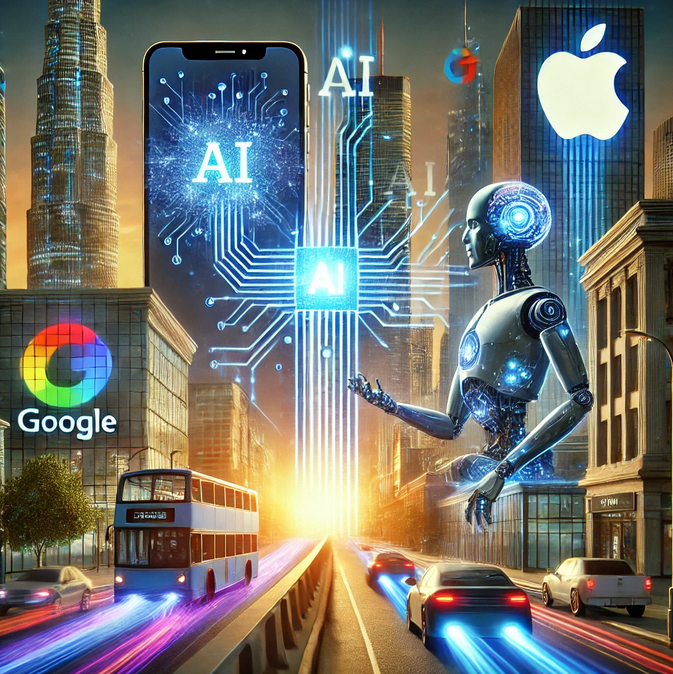The year is 2025. Forget Siri, Alexa, or Google Assistant. Imagine an AI that doesn't just answer questions or set alarms, but actually controls your computer, seamlessly navigating the digital world on your behalf. This is the promise of "Operator," OpenAI's ambitious new AI agent slated for release in January.
While still shrouded in some secrecy, leaks and internal reports paint a picture of Operator as a game-changer. This isn't just another chatbot; it's an autonomous entity capable of understanding complex instructions and executing tasks across various applications. Need to book a flight, write code, or conduct research? Operator will be your digital proxy, freeing you from the mundane and unlocking new levels of productivity.
More Than Just Automation:
Operator's potential impact extends far beyond simple convenience. By taking over tedious digital chores, it could fundamentally alter how we interact with technology. Imagine:
-
Effortless Workflow: Instead of juggling multiple apps and windows, you simply tell Operator what you need. It handles the rest, seamlessly switching between programs, finding information, and completing tasks.
-
Personalized Automation: Operator learns your preferences and adapts to your workflow, anticipating needs and proactively offering solutions.
-
Enhanced Accessibility: For those with disabilities, Operator could be a lifeline, enabling greater independence and access to technology.
-
Boosted Productivity: By offloading repetitive tasks, Operator frees up human brainpower for creativity, problem-solving, and strategic thinking.
The Technology Behind the Agent:
Operator's capabilities are rooted in cutting-edge AI research, leveraging advancements in natural language processing, machine learning, and reinforcement learning. It likely builds upon the foundation of GPT-4, OpenAI's powerful language model, but with crucial enhancements:
-
Contextual Understanding: Operator goes beyond simple keyword recognition. It understands the nuances of human language, including intent, context, and even implied meaning.
-
Cross-Application Integration: Unlike traditional AI assistants confined to their own ecosystems, Operator can interact with a wide range of software, from web browsers and email clients to specialized programs like code editors and design tools.
-
Autonomous Decision-Making: Operator isn't just following pre-programmed scripts. It can analyze situations, make decisions, and adapt its approach based on real-time feedback.
The Potential and the Perils:
While the potential benefits of Operator are immense, it also raises important questions and concerns:
-
Security and Privacy: Granting an AI agent access to your digital life requires robust security measures and careful consideration of privacy implications. How will OpenAI ensure Operator doesn't misuse personal data or become a target for malicious actors?
-
Job Displacement: As AI agents become more capable, could they eventually replace human workers in certain roles? How will society adapt to this potential shift in the workforce?
-
Ethical Considerations: Who is responsible if Operator makes a mistake or causes harm? How do we ensure these powerful tools are used ethically and responsibly?
-
Control and Transparency: How much control will users have over Operator's actions? Will its decision-making processes be transparent and understandable?
The Road Ahead:
OpenAI plans to initially release Operator as a research preview, likely through its API for developers. This will allow for controlled testing and feedback before a wider rollout. However, the company faces stiff competition from other tech giants like Microsoft and Salesforce, who are also developing their own AI agents.
The race is on to create the ultimate digital assistant, and Operator could be a major contender. If OpenAI can address the challenges and deliver on its promises, Operator could usher in a new era of human-computer interaction, where technology seamlessly integrates with our lives, empowering us to achieve more than ever before.
Beyond the Hype: A Deeper Dive into Operator's Potential Impact
While the initial excitement surrounding Operator focuses on its ability to automate tasks, its true potential lies in its capacity to augment human capabilities and transform various aspects of our lives. Let's explore some specific areas where Operator could have a profound impact:
-
Education:
Imagine a personalized AI tutor that adapts to each student's learning style and pace. Operator could revolutionize education by:
-
Providing customized learning materials and exercises.
-
Offering real-time feedback and guidance.
-
Identifying knowledge gaps and suggesting targeted resources.
-
Fostering deeper understanding through interactive simulations and visualizations.
-
Healthcare:
Operator could assist healthcare professionals by:
-
Analyzing patient data to identify potential health risks.
-
Streamlining administrative tasks and freeing up doctors' time for patient care.
-
Providing patients with personalized health information and support.
-
Assisting in medical research and drug discovery.
-
Creative Industries:
Operator could become a powerful tool for artists, writers, and musicians by:
-
Generating creative ideas and inspiration.
-
Assisting with research and information gathering.
-
Automating repetitive tasks like editing and formatting.
-
Providing feedback and suggestions to improve creative work.
-
Business and Industry:
Operator could optimize business processes and increase efficiency by:
-
Automating customer service and support.
-
Analyzing market trends and identifying new opportunities.
-
Managing complex projects and coordinating teams.
-
Streamlining supply chain management and logistics.
-
Scientific Research:
Operator could accelerate scientific discovery by:
-
Analyzing large datasets and identifying patterns.
-
Generating hypotheses and designing experiments.
-
Automating data collection and analysis.
-
Facilitating collaboration among researchers.
The Future of Work:
The rise of AI agents like Operator raises questions about the future of work. While some fear job displacement, others see an opportunity for humans and AI to collaborate, creating new roles and industries. Operator could free humans from mundane tasks, allowing them to focus on higher-level thinking, creativity, and problem-solving.
It's crucial to proactively address the potential challenges of AI-driven automation, such as:
-
Developing education and training programs to prepare workers for the changing job market.
-
Ensuring equitable access to AI technology and its benefits.
-
Creating social safety nets to support those affected by job displacement.
The Ethical Imperative:
As AI agents become more sophisticated and integrated into our lives, it's essential to prioritize ethical considerations. OpenAI and other developers must ensure that these technologies are used responsibly and for the benefit of humanity. This includes:
-
Transparency and Explainability: Users should understand how AI agents make decisions and have the ability to challenge or override those decisions.
-
Fairness and Bias Mitigation: AI agents should be designed to avoid perpetuating existing biases and discrimination.
-
Privacy and Data Security: Strong safeguards must be in place to protect user data and prevent misuse.
-
Accountability and Responsibility: Clear mechanisms must be established to address any harm caused by AI agents.
Conclusion:
OpenAI's Operator represents a significant step forward in the development of AI agents. Its potential to transform our digital lives is immense, but it also comes with challenges and responsibilities. By embracing a thoughtful and ethical approach, we can harness the power of AI to create a more productive, equitable, and fulfilling future for all.






